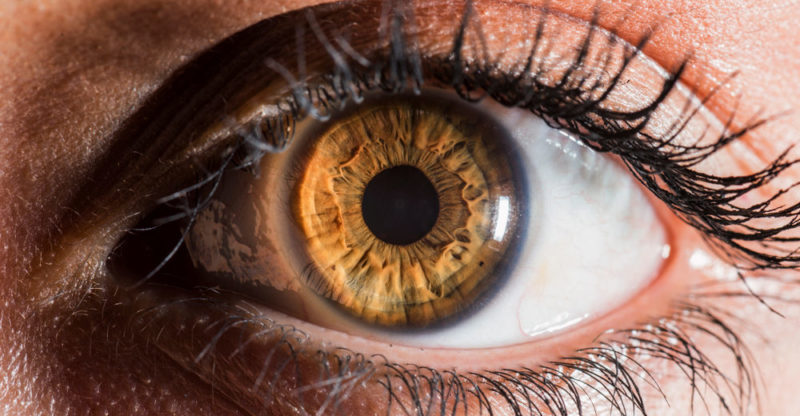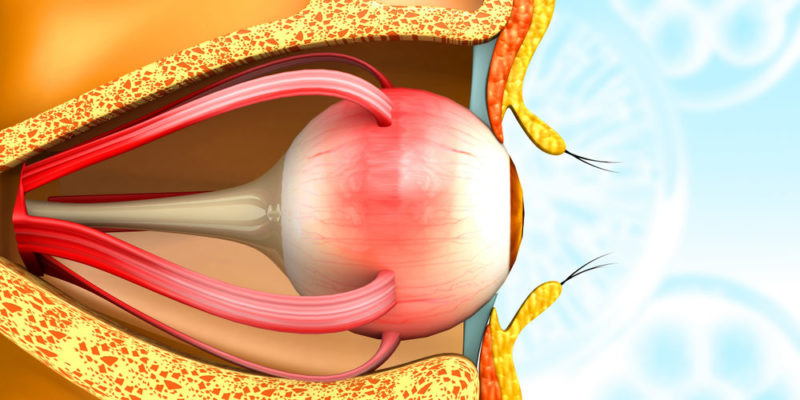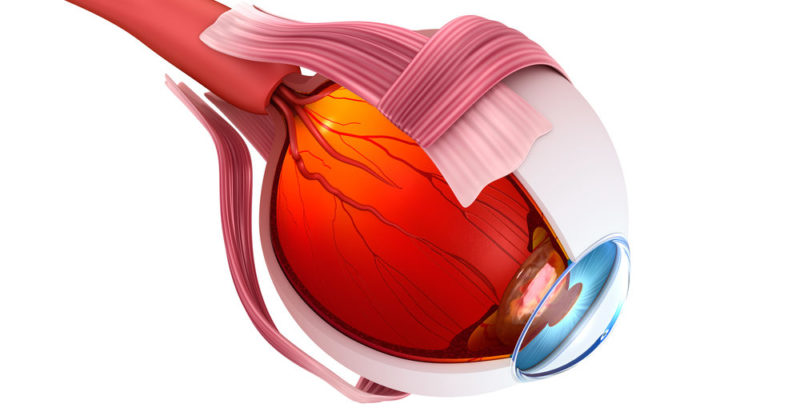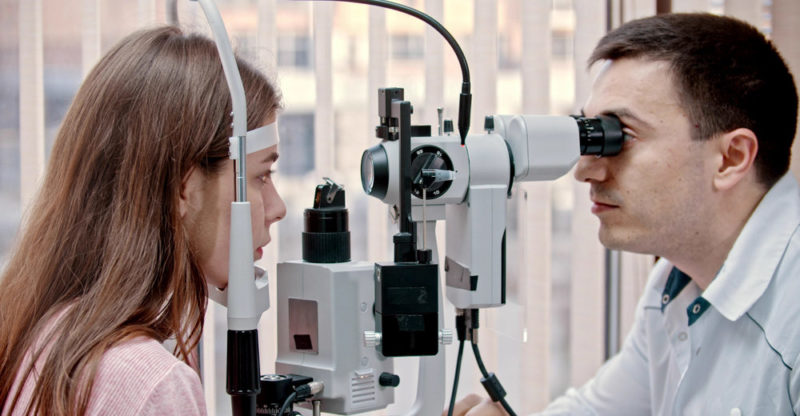We explain what the human eye is, the parts that make it up, and how it works. Also, what are its characteristics and diseases?
What is the human eye?
The human eye is the organ of our body responsible for vision . To do this, it detects light and sends the perceived images to the brain , converted into electrical impulses for their formulation, understanding and interpretation. In its operation and constitution it is similar to the eyes of most vertebrates .
Given its bilateral symmetry, the human body normally has a pair of eyes , located in the upper part of the face, one on each side of the nose. Each is embedded in a deep, pyramid-shaped bony cavity in the skull, known as the orbit.
In addition to the bony protection of the skull, the eyes are protected by the eyelids , which are provided with eyelashes. In addition, the tear ducts keep them moist, clean of dirt. In this way they are kept safe from direct contact with objects.
Typically , each adult human eye is about 2.5 cm in diameter and has an equal number of muscles and nerves at its disposal. Both usually operate simultaneously and coordinated.
Capabilities of the human eye

The eyes of other animals surpass the human eye in power of vision, speed of vision.
Some animals even have the ability to look in different directions at the same time.
However, the human eye is also a powerful organ.
Its determined resolution is around 576 megapixels , unattainable for any type of invented photographic camera invented so far.
It has a cornea capable of reaching 43 diopters and about 6 million cones in the retina, along with about 90 to 126 million rods.
Parts that make up the human eye

The human eye comprises a complex set of three parts:
- The outer layer. The most superficial portion of the gelatinous globe that is the eye, where are:
- the sclera. A white, thick, thick and resistant membrane, as it is composed of collagen fibers. It serves to shape and defend the internal organs.
- the cornea Located in the front region of the eye, on the anterior chamber and covering the iris. It is a transparent lens that is responsible for two thirds of the visual power of the eye, and where the largest proportion of nerve endings in the human body are found.
- anterior chamber. A space filled with aqueous humor, a liquid that keeps the cells of the cornea and lens nourished, which do not receive direct blood supply.
- The middle layer. Located below the surface, it comprises the following organs:
- Choroid or posterior grape. It is a membrane highly irrigated by abundant blood vessels and connective tissue, located between the retina and the sclera of the eye. It is dark in color and is perforated at the back by the optic nerve. Its function is to prevent light from bouncing uncontrollably inside the eye.
- ciliary body. Located between the iris and the retina, it is where the aqueous humor that fills the anterior chamber is produced. In addition, it deals with the change in shape of the lens that allows focusing. It is made up of two structures: the ciliary muscle and the ciliary processes.
- Iris. It is a colored and circular membrane that separates the anterior from the posterior chamber, with a central opening of varying size, which gives access to the pupil. The iris regulates the amount of light that enters the eye, much like the diaphragm on a camera.
- The inner layer. The deep part of the eye, where the most important structures are, such as:
- Pupil. The hole in the center of the iris, through which light enters the back chamber of the eye, and which can dilate or contract to allow more or less light to enter. It measures between 3 and 4.5 millimeters.
- Crystalline. A biconvex lens located behind the iris and in front of the vitreous humor, which allows objects perceived at different distances to be focused, rapidly altering their curvature and thickness.
- Retina. Inner surface of the eye onto which perceived images are projected, as on a canvas in movie theaters . Its structure is a complex network of neurons and photoreceptor cells that respond to the incidence of light electrically and chemically, generating electrical impulses that the optic nerve then transmits to the brain.
- vitreous humour. It is the "filling" of the eye, a transparent and gelatinous liquid that is found between the retina and the lens. It is denser than the aqueous humor and maintains the round shape of the eye.
How does the human eye work?
The human eye perceives light from outside that enters refracted through the outer layers . Thus, an inverted image is formed on the retina, as happens with cameras obscura. This image is transmitted by the retinal cells to the brain, via the optic nerve, which is responsible for interpreting and deciphering what is observed.All the internal organs of the eye are involved in this process. For example:
- Iris. It contracts to block out excess light or expands when light is low, ensuring that some image of the outside world is formed.
- Crystalline. It switches between its concave and convex shape as needed to focus (see near or far) for a sharp image.
Why is the human eye important?
 The human being , as a species, privileges vision over the other senses , to the point that it has become very dependent on it. For example, an individual with only one eye has great difficulty measuring depth and calculating distances around him.
The human being , as a species, privileges vision over the other senses , to the point that it has become very dependent on it. For example, an individual with only one eye has great difficulty measuring depth and calculating distances around him.In addition, the eye is an organ of great importance for social functioning . Culturally, we value, for example, looking directly into the eyes, which can be interpreted as a gesture of sincerity, love , frankness or even anger.
Optic nerves
The nerves of the human eye connect directly to the brain, to which they transmit the visual information they collect from the outside. The main nerves are:
- Optic nerve (in the retina)
- Oculomotor nerve (III cranial nerve)
- Oculomotor nerve (VI cranial nerve)
- Pathetic nerve (IV cranial nerve)
Optic muscles
 The human eye relies on two sets of muscles to function :
The human eye relies on two sets of muscles to function :
- intrinsic muscles. Those located inside the eye, such as the ciliary muscle, which allows the movement of the lens so that through its change in shape it allows focus.
- extrinsic muscles. Those located around the eye, and there are six of them, allowing the mobilization of the eyeball within its orbit, so as not to have to move the entire head to direct the gaze. They also allow blinking.
Optic cells
The most complex optic cells are those that make up the retina. They are a type of photosensory neuron, whose reaction to colors is different.
- Cones. Concentrated in the middle of the retina, they are sensitive to different wavelengths of light, thus specializing in different colors and tones. This means that each color is perceived by a different group of cones.
- Canes. The rods are located on the periphery of the retina, and are activated in the dark, allowing the eye to perceive white, black and shades (grey), without perceiving any color.
Ophthalmology
 The branch of medicine specializing in the human eye is ophthalmology, as well as eye surgery. It allows the care of the eye and the eventual repair of its damages. It has techniques that allow it to replace some of its parts (such as the lens or the cornea) when they are worn out or simply sick.
The branch of medicine specializing in the human eye is ophthalmology, as well as eye surgery. It allows the care of the eye and the eventual repair of its damages. It has techniques that allow it to replace some of its parts (such as the lens or the cornea) when they are worn out or simply sick.
What is the color in the eyes due to?
 Human eyes can generally have three or four colors : blue, green or brown, although cases of gray and even purple eyes have also been recorded.
Human eyes can generally have three or four colors : blue, green or brown, although cases of gray and even purple eyes have also been recorded.This coloration is genetically determined and depends on the activation of melanin within it . It is also known that dark eyes tend to be genetically dominant over light eyes.
What diseases affect it?
The human eye can suffer from many defects and diseases, of which blindness or total loss of vision is always the most extreme. Other possible conditions are:
- Myopia. The eye's focal point forms far forward on the retina, making it much more difficult to see far away.
- Astigmatism. Due to a difference in the percentage of refraction in the outer layers of the eye (such as the cornea), the image does not appear sharp, but rather out of focus.
- Farsightedness. Contrary to myopia, the image is formed far back on the retina and this causes the eye to work too hard to adjust to the unclear image of things.
- Colour blindness. Due to a defect in the retinal cells, the colors red and green are often difficult to discern, and sometimes also other shades between them.
- Conjunctivitis. This is the name given to the infection of the conjunctiva, that is, the mucous membrane that covers the eyelids, due to the introduction of external agents. This causes irritation, drainage, and other symptoms, depending on the severity of the infection.
- Glaucoma. A serious disease that causes a gradual increase in intraocular pressure, which has to do directly with the production and elimination of aqueous humor. Without the correct treatment it can culminate in total or partial blindness.
The above content published at Collaborative Research Group is for informational and educational purposes only and has been developed by referring reliable sources and recommendations from technology experts. We do not have any contact with official entities nor do we intend to replace the information that they emit.
MA student of the TransAtlantic Masters program at UNC-Chapel Hill. Political Science with a focus on European Studies. Expressed ideas are open to revision. He not only covers Technical articles but also has skills in the fields of SEO, graphics, web development and coding. .
Leave a reply
Your email address will not be published. Required fields are marked *Recent post

Sport: What Is It, Types, Risks, Features, Characteristics and Examples

Dogs: Emergence, Features, Characteristics, Feeding and Breeds

Story: Definition, Elements, Structure, Features and Characteristics

